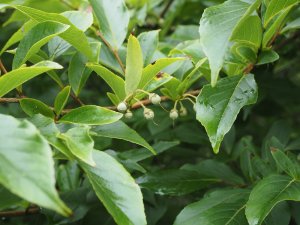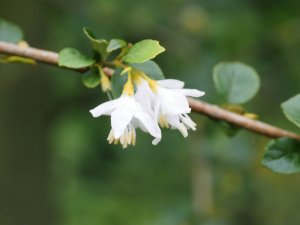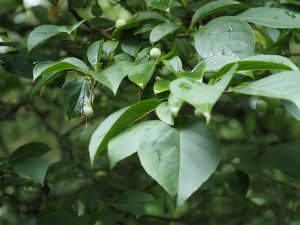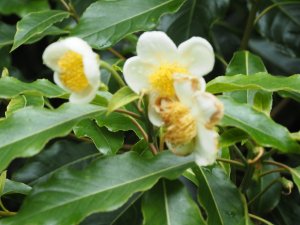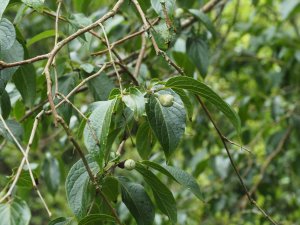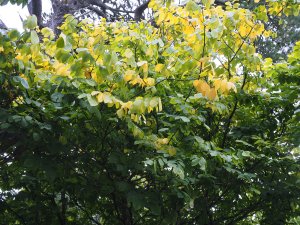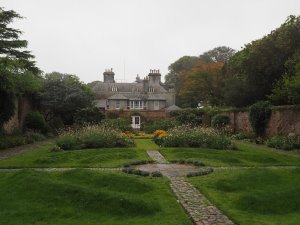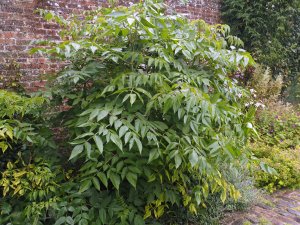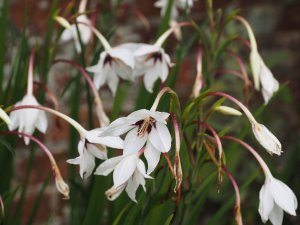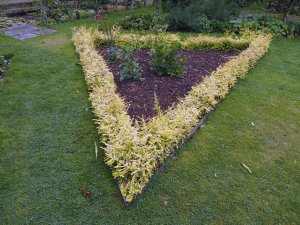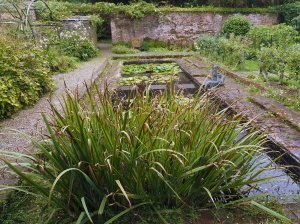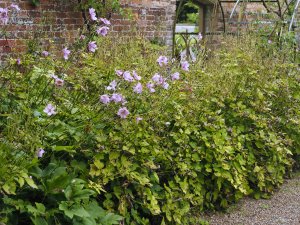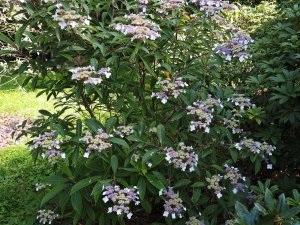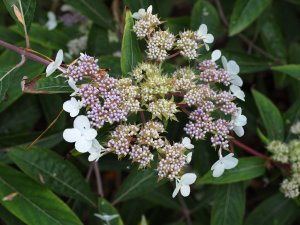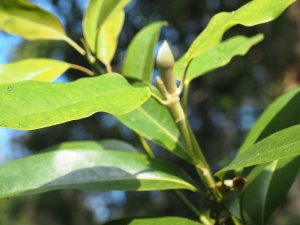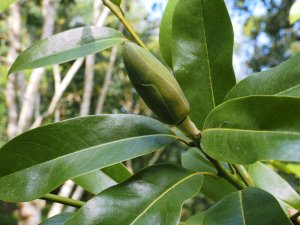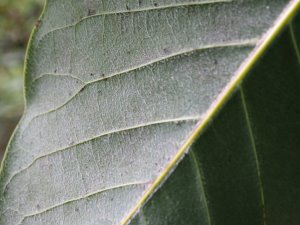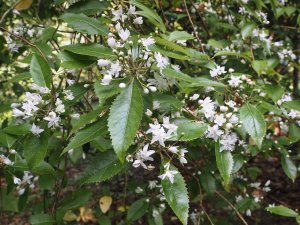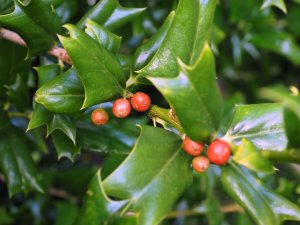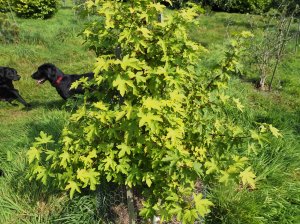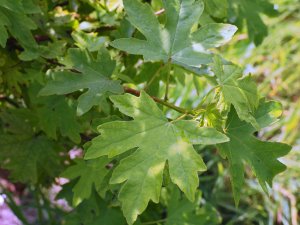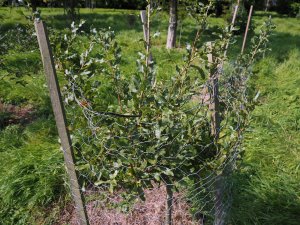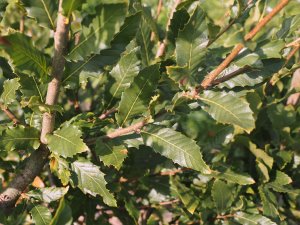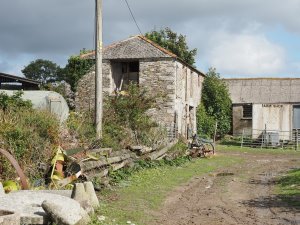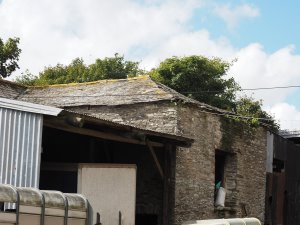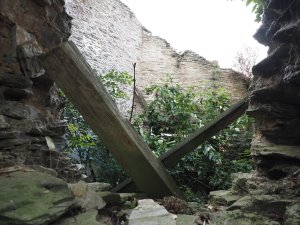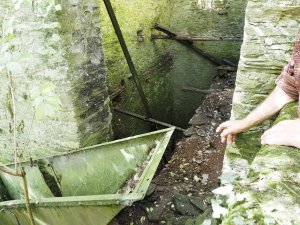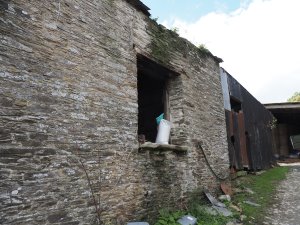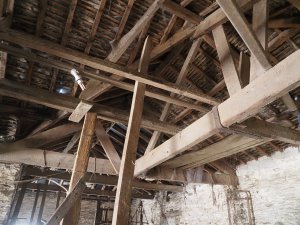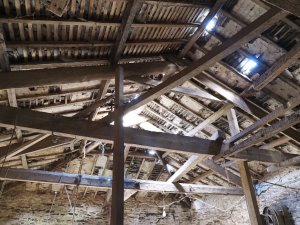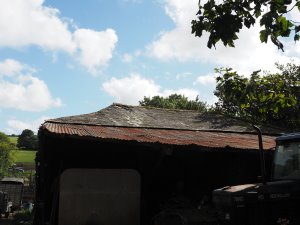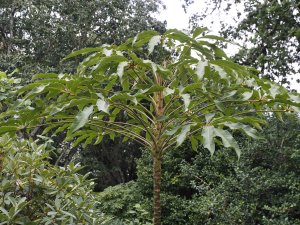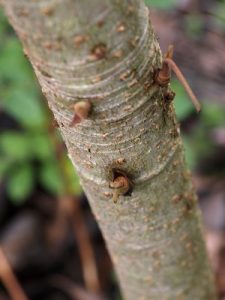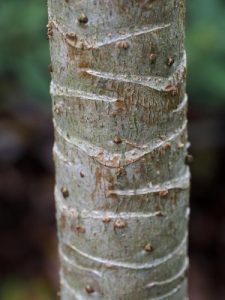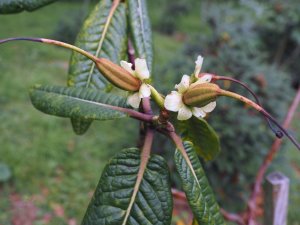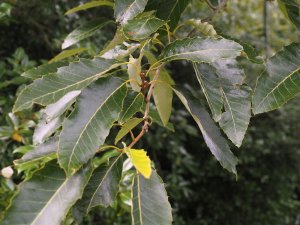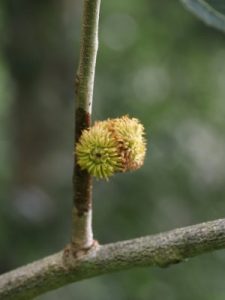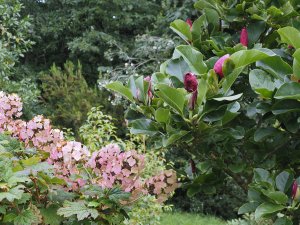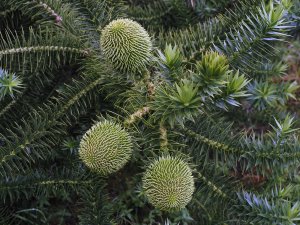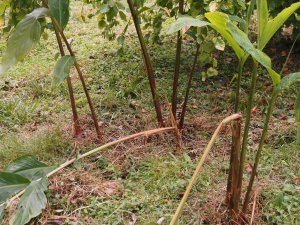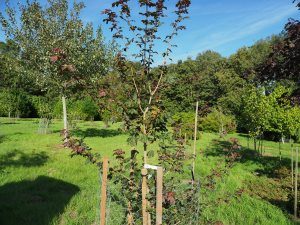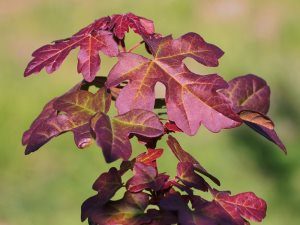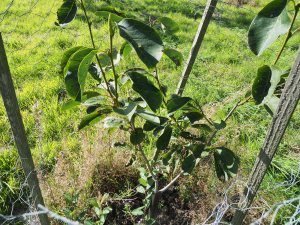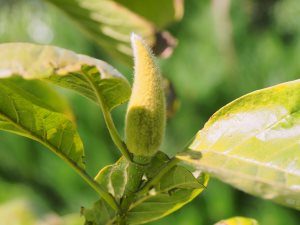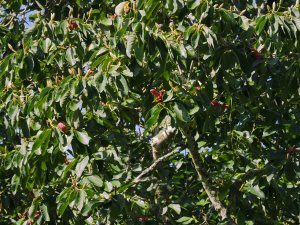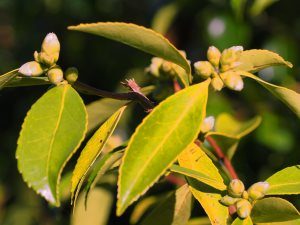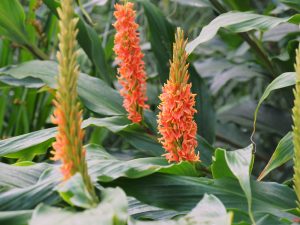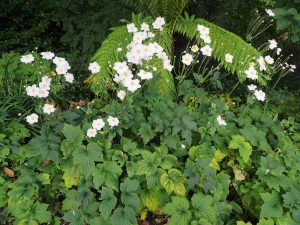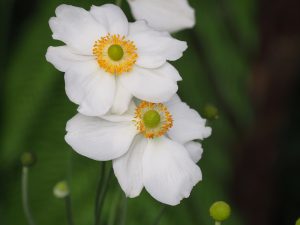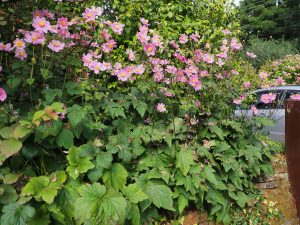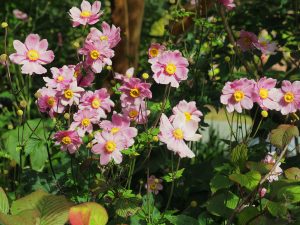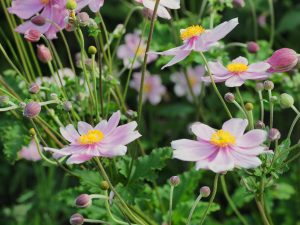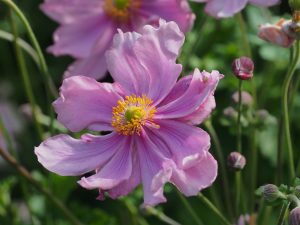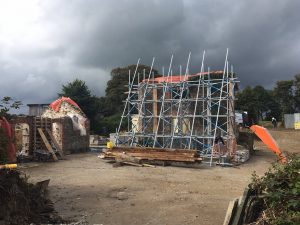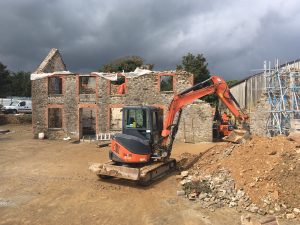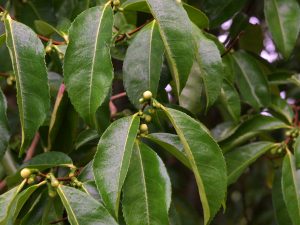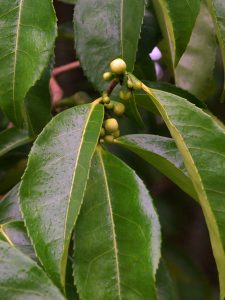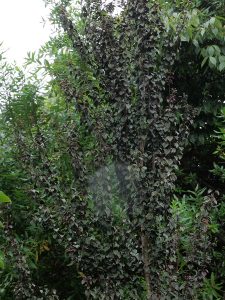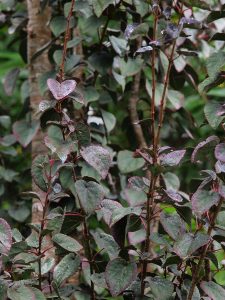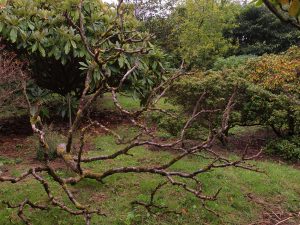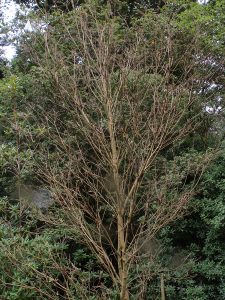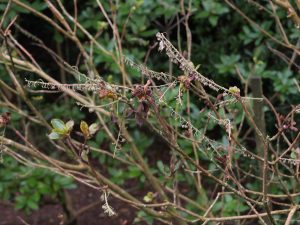2025 – CHW
The first seed collecting day – many magnolias were ripe – ‘F. J. Williams’, ‘Caerhays Splendour’, ‘Princess Margaret’, sargentiana var. robusta and cylindrica.
Styrax wuyuanensis not ripe.
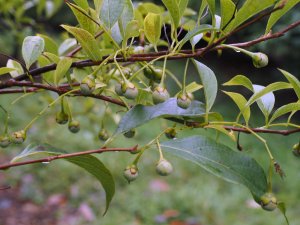
A Great Gardens of Cornwall meeting at Trewithen and then promotional videos to put together for the 30 year celebration next spring.The walled garden where filming took place.
Hydrangea aspera – a gift from Lord Howick in 2018, has become a fine plant. We must now have 10 or more different forms of H. aspera. No name on this one.
A visit to a tenant farmer on the property of the estate where the existing tenants son has a right of succession to the farm tenancy. It was like going back in time by at least 50 years, probably more. There were two traditional stone barns in an appalling state of disrepair and dilapidation as you can see here. One used to house a water wheel for milling corn in the 1920’s an still serves as a grain store today despite the roof falling in.The main source of income is a farms shop in a nearby village and the tenant owns another farm himself. A classic case for getting planning permission to turn both barns into dwellings or holiday lets over time. A new hamlet in the countryside rather than this shambolic dereliction of a farmyard. Major investment though of £750k or so to do the work properly. In another 5-10 years both building will be roofless ruins unless something is done. Yet another new project in the pipeline.
Schefflera rhododendrifolia has grown to 10-12ft with a good crown and excellent bark. The roedeer are however nipping off the side shoots which would make good cuttings.
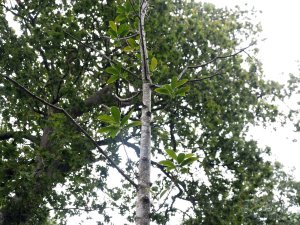
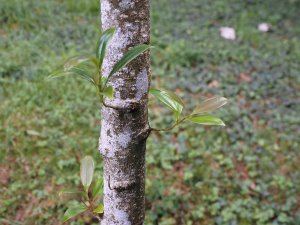
The new limit of six people in a social gathering inside or outside seemed to present a problem for us continuing to conduct our commercial shooting days. However there are exemptions for COVID-secure sporting events, which I assume includes shooting, although this is still to be confirmed. More importantly, all our staff involved in a shooting day, including all our beaters, keepers and pickers-up, are classed as employees. This may mean that we are limited to only six people as shooting guests. Sporting events on the other hand are limited to 30 people.
I am also told that Tom Hudson’s rare plant fair at Tregrehan can go ahead with local council approval, providing the exhibitors/traders are spaced out and that the names and addresses of anyone attending are collected as they arrive.
This would seem to prove that shooting can carry on much as we have envisaged it.On the subject of BLM and the BBC’s attempts to prevent the Last Night of the Proms including the actual singing of Rule Britannia, I thought it might be interesting to record a missive about the background to the creation of Rule Britannia itself:
From: Daphne Scott-Harden
Sent: 08 September 2020 16:41
To:
Subject: Fwd: BLM / Rule Brittania – background
Sent from my iPad
Begin forwarded message:
From: Andrew Bengough
Date: 8 September 2020 at 16:27:44 BST
To: Andrew Bengough
Subject: FW: BLM / Rule Brittania – background
In the 17th century the seas around Britain were ruled by North African Muslim Slavers.
They stopped British ships and carried off the crews to be sold as slaves in Algiers and Tripoli.
The situation became so bad that fishermen from Devon and Cornwall wouldn’t put out to sea in case they were captured by North African Slave Traders.
Between 1609 and 1616, 466 British ships were captured by Slave Traders in the English Channel, Irish Sea and North Atlantic, and the crews were sold into slavery.
In 1625 a raiding party landed at Mount’s Bay in Cornwall and 60 people who had taken refuge in a local church were dragged out, loaded up and taken off to Africa to be sold as slaves.
On 12th August 1625, the Mayor of Plymouth wrote to London for military help after 27 ships had been seized by North African Muslim Slave Traders in just 10 days.
In 1645, 240 people were seized as slaves in Cornwall.
The situation only began to change after the end of the English Civil War when the Royal Navy was built up under Oliver CROMWELL.
By 1700, North African Slavers generally knew better than to bother the British Isles in the search for slaves because of the Royal Navy.
It was a triumph that Britain was finally able to control its own coastal waters.
It was in commemoration of this that in 1740, James THOMPSON wrote ‘Rule Britannia’.
It is a hymn of thanksgiving rather than a proclamation of aggressive nationalism.
If you get this far and are interested to learn more, read “White Gold” by Giles Milton.
2019 – CHW
Acer campestre ‘Red Shine’ still with red secondary new growth. This is an excellent form of the field maple which Burncoose ought to stock.
To Leslie Baker’s wonderful garden in St Austell last Friday to make some plant care video clips for the Burncoose website. The garden is immaculate and includes several of the herbaceous borders which we do not have ourselves to photograph. Karol has new video filming equipment and Gerry, back from maternity leave, is taking the leading role. We complete 13 new videos about pruning and tidying herbaceous plants after flowering and in preparation for autumn.The best things in Leslie’s garden flowering today are:Hedychium densiflorum, the orange (rather than yellow) flowering form. Here we grow Hedychium gardnerianum which has a much larger white flower panicle with yellow splashes at the base. It may well be that Leslie’s plants are H. densiflorum ‘Assam Orange’.
Building work on the conversion of the two barns at Newton Farm into two houses. The cob walls have largely collapsed and will have to be rebuilt so the project is eight weeks behind and due to finish now in late April (perhaps!).
Camellia oleifera will be out quite soon and there are plenty of buds.
2015 – CHW
Here is an example of the enormous versatility and colour range of hydrangeas. This started out as Hydrangea ‘Altona’ as you can see from one or two late flowers but just look at the colour variations in the mopheads as they die off. Greens, purples, blues – every colour but what it started out as. Perfect flowers to pick and dry quickly to retain their colours for a Christmas flower arrangement.
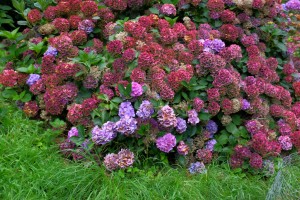
Below the Four in Hand yet more of the aucuba hedge is dying off. Some phytophtora peculiar to aucuba which infects only aucuba we are told. Defra has tested it scores of times all over Cornwall and have confirmed it is NOT phytophtora ramorum which primarily infects Rhododendron ponticum. This patch started getting diseased when a large branch fell on it. The clear up meant cutting back the aucuba and the infection has clearly spread more quickly on the cut areas where the zoospores meet sap seeping from cut stems.
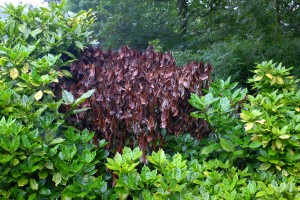
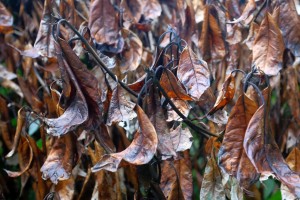
2001 – FJW
Last of harvest completed. Disaster in New York.
1988 – FJW
Last corn cut and in (250 acres).
1980 – FJW
Corn in – 50 more acres than ever – say 280 tonne.
1977 – FJW
All grain in – some straw to come. 140 acres, good yield – tricky weather and 2 Sundays worked.
1927 – JCW
Came from Scotland for one day. The cyclamen are wonderful. Hoheria with a narrow leaf is nice. Roses good. Eucryphia cordifolia good but needs more sun. Odds and ends of rhodo’s open.




